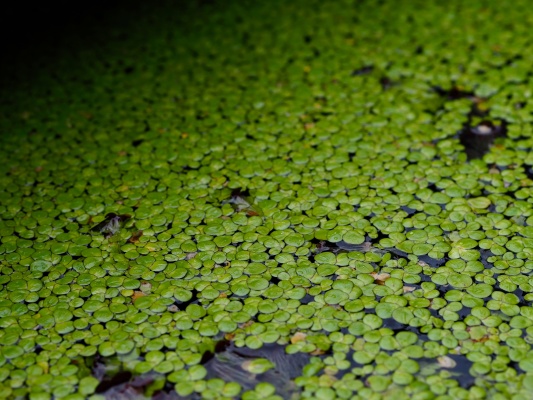Greater Duckweed
Spirodela polyrhiza
 Type
Type Plant
Plant Status
Status Widespread
Widespread Regionally Rare
Regionally Rare Season
Season Spring
Spring Summer
Summer On the water's surface, particularly along sections of the canal where the water looks very clear and clean.
Greater Duckweed is a perennial aquatic plant found in slow-moving or still waters, such as ponds, canals, ditches and lakes, that are sheltered from wind and have no waves.
It grows on the water's surface, usually in dense colonies and forming a 'mat'. Each plant is a smooth round flat shiny green disc on top and often purplish underneath, measuring 4-10mm across and producing several minute roots.
These simple oval-shaped life forms each comprise a single thallus ' in essence a plant combining functions of both leaf and stem. These thallus are filled with tiny pockets of air which give them the ability to float.
Greater Duckweed only blooms rarely, but, when it does, flowers are produced from two pouches on the thallus: one pouch will produce one female flower with a single pistil, the other two male flowers which each contain a single stamen. The female flower will be replaced by a tiny sack-like fruit containing just one or two seeds. More commonly, however, instead of flowering, the plant will produce buds which eventually separate from the parent to become individual plants.
This plant is a highly nutritious food source for animals such as ducks and other water fowl, including Moorhens and Coots, while it also provides habitat for aquatic organisms and shelter for amphibians such as frogs and toads. The Montgomery Canal is one of a few sites in the region to have this locally rare aquatic plant.
One of five native species of duckweeds, Greater Duckweed (Spirodela polyrhiza) is very tricky to identify, especially from the towpath. It's bigger than the other duckweeds (though still tiny) and each leaf (thallus) has more than one root.

